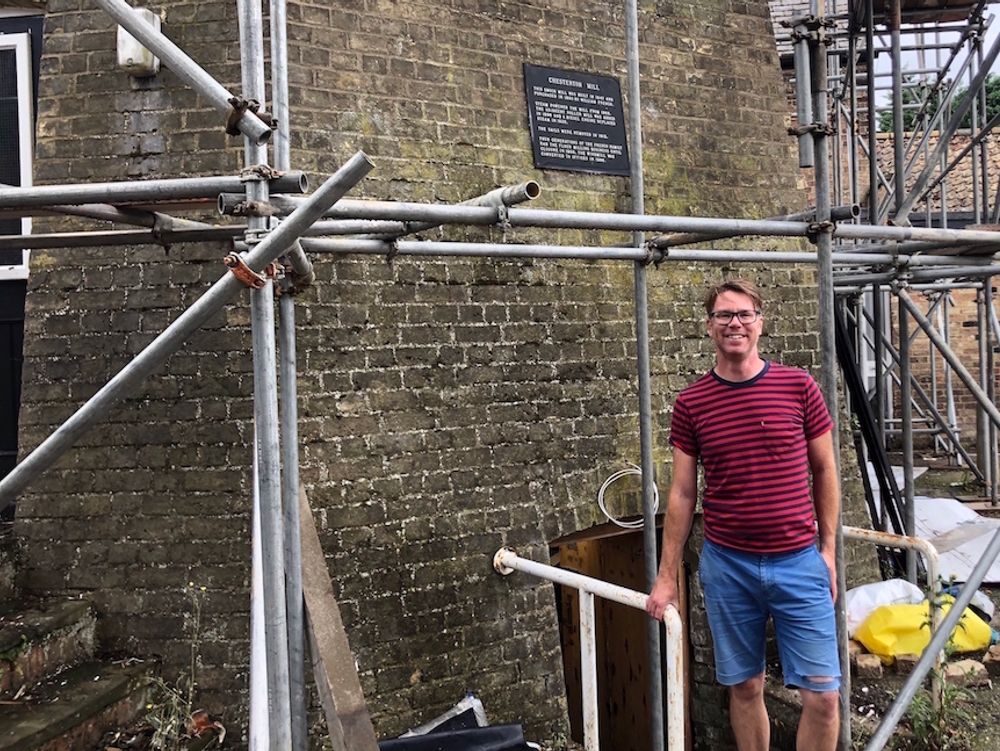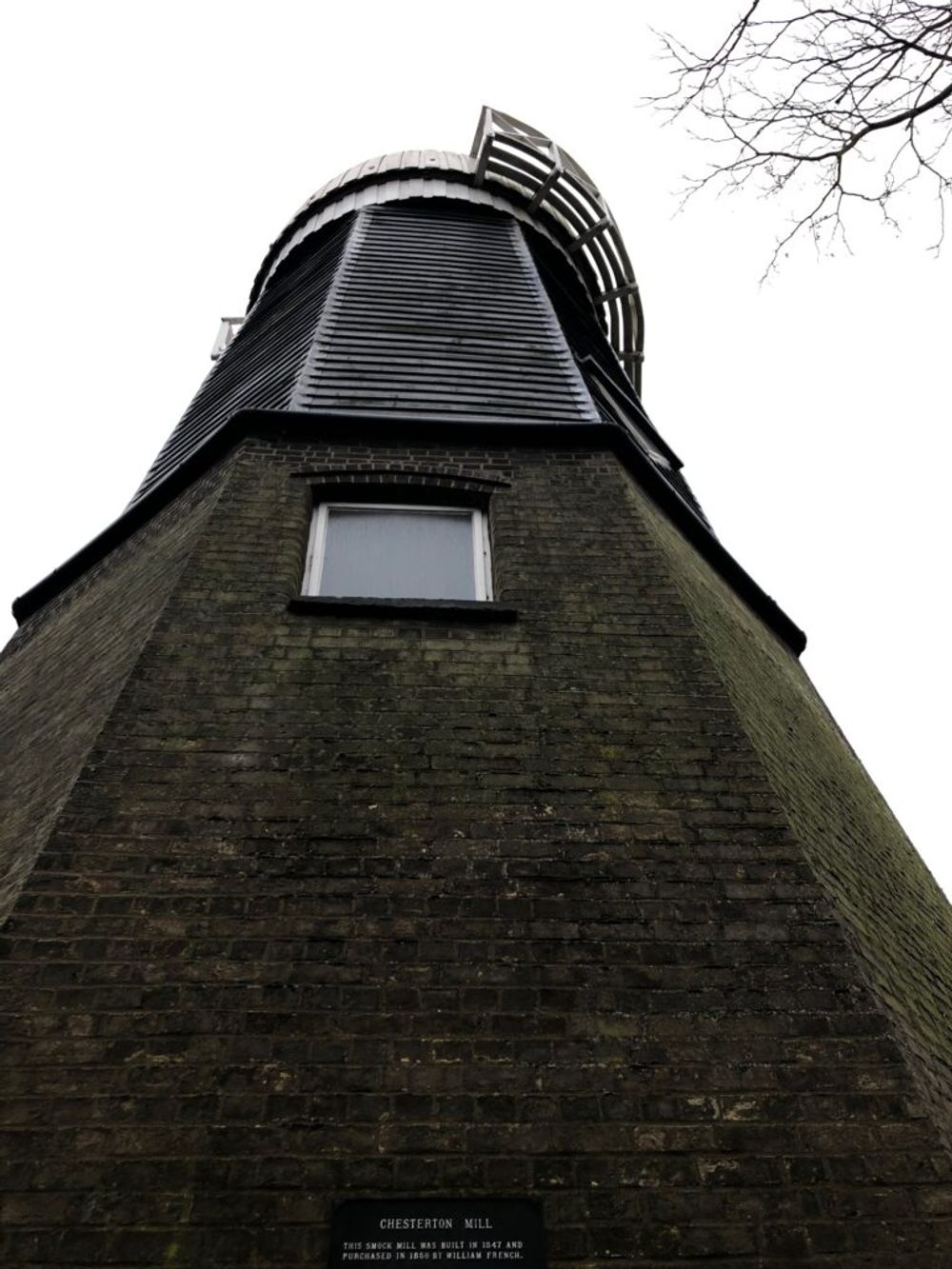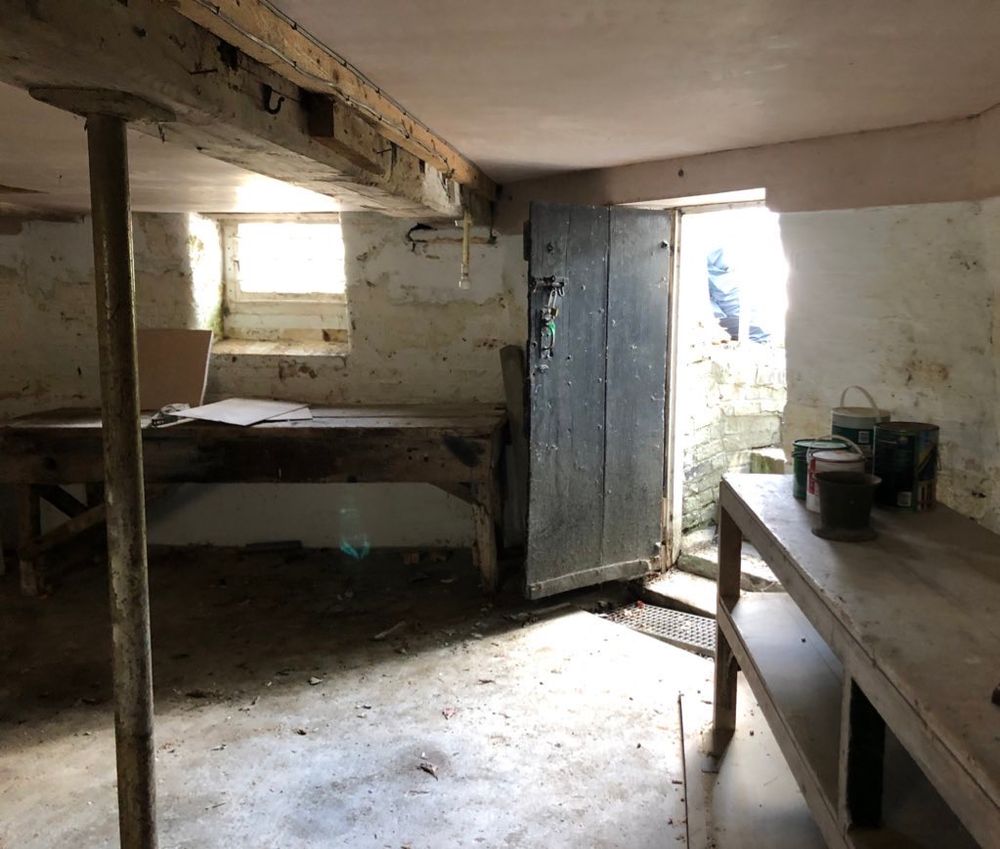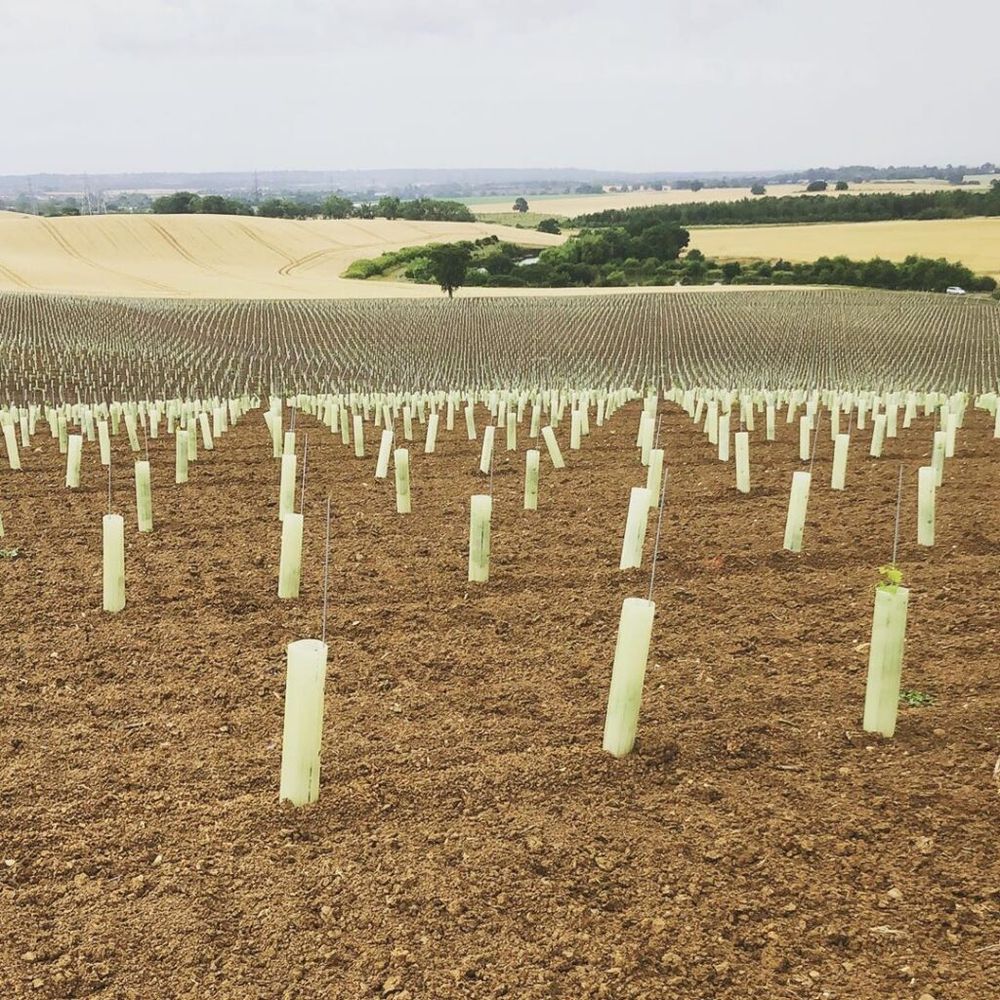“There’s much to do: barrel-rack building for the eight ex-Burgundy barrels delivered last month, establishing a mini-lab, testing the various bits of kit… not forgetting installing the all-important stereo and getting the kettle on.”
Chapter 1: The Name Game
I have two children, Grace and Alice. Their names came pretty easily; naming the third child is proving much trickier.
Maybe it’s because this one isn’t flesh and blood. It’s a concept, a business, part bricks and mortar, part sunshine and soul… it’s Cambridge’s first urban winery, which means it’s also Cambridge’s first winery. It’s possibly the smallest winery in the country too – less than 23m2– and certainly the only one I know of that’s housed in a windmill (more on the windmill later).

Chris Wilson outside Chesterton Mill, home of his first winery
I’ve wanted to start my own winemaking business for some time, but never thought that the most time-consuming process would be naming the bloody thing. Up until now – and over the past three years or so – the hardest thing was finding the perfect site for a small-scale urban winery in Cambridge, the city I’ve lived in with my family since 2013.
Having looked at a number of sites across Cambridge and into The Fens an opportunity came up to house the winery in the basement of a Grade II listed windmill less than a mile from the city centre.
Chesterton Mill was built in the late 1840s and thrived for over 100 years on its site just north of the River Cam, producing grain and flour for the city’s bakeries, delivered by horse and cart.

The winery will bring production back to the mill for the first time in 60 years
Known locally as French’s Mill after William French, who began milling here in 1847, the sails and milling stones of this imposing smock mill turned grain into flour until 1955 when the French family business closed. The family left its mark on the area – the road which leads to the mill today is called French’s Road – and the mill itself still stands proudly some 173 years after it was built, albeit without its sails which were removed in 1912.
The mill’s basement is where the winery is housed, and it’s the perfect spot in some ways (a 14°C ambient temperature, a good drainage system, bags of character) and challenging in others (low ceiling height, single phrase power, narrow-ish door). I’m looking forward to overcoming these challenges and am sure they will shape the wine I make in many ways.

It’s not going to be a ‘shoe-in’ with the size of this venue: how will the egg fermenter and tanks fit in?
So back to the name, the obvious choices – Windmill Wines, Gristmill, Basement Wines, Underworld – all made the short list but all seemed a bit prosaic. In the end Gutter & Stars Wines was chosen; it’s part poetic, part romantic, very realistic. Financially this is a self-funded operation, so while I may be watching the pennies I am also aiming for the stars. The Oscar Wilde reference will chime with many too, and equally the Norman Cook nod.
The lease commences and the keys are handed to me this week so work soon begins in earnest turning this wonderful space into a hive of industry, bringing a production facility back to Chesterton Mill for the first time in more than 60 years. There’s much to do: barrel-rack building for the eight ex-Burgundy barrels delivered last month, establishing a mini-lab, testing the various bits of kit… not forgetting installing the all-important stereo and getting the kettle on.

Essex Fruit
After the project’s all-important name, the most common questions I have been asked about the winery are where are the grapes coming from, and do I know what I’m doing?
I studied oenology at Plumpton College, graduating with a BSc in 2013, so have a fair idea of what goes on in a winery. During my time at Plumpton and since graduating I have made wine in California, Germany’s Saarland and Sussex, and as a trade and consumer wine journalist I have visited countless cellars around the world, getting to know winemakers, philosophies and techniques along the way. All of this will help.
And the grapes? I wanted to source fruit from as close to Cambridge as possible for logistical (not forgetting marketing) reasons, so it’s fortunate that East Anglia is fast becoming the grape-growing bread basket of the UK. Essex, with its big skies and below average rainfall is England’s very own Napa Valley and the grapes grown here – especially in the famed Crouch Valley – can be exceptional.
Following a number of sorties into Essex, with vineyards less than an hour from Cambridge, I have found a source for my fruit in Missing Gate Vineyard in Bicknacre, near Chelmsford in the Crouch Valley. The Speakman family have worked the land here for three generations, recently moving into viticulture when Nick Speakman took the helm. Alongside his sons, and working with expert viticulturist Duncan McNeill, they initially planted seven hectares of vines and have since added another 25 ha.

Missing Gate Vineyard: building for the future with an extra 25ha of vines
The clay hills of the estate are planted with Pinot Noir, Chardonnay, Pinot Blanc, Bacchus, Sauvignon Blanc and Cabernet Blanc. The Speakmans have ambitious plans for their business so it’s exciting to work with a team of people who are deeply passionate about growing quality fruit and see the east of England as a future hotspot for quality still wines.
In terms of the specific grapes and the planned styles of Gutter & Stars, more will be revealed in next month’s column, where there’ll also be a lowdown on the red tape of setting up a venture like this (six different licences needed so far..!) and how the winery ‘build’ is going. I know that the barrels will fit through the door, but will the egg-shaped fermenter and tanks, and are my titration skills still up to scratch in the lab…?
The Buyer will be featuring a monthly update from Chris on the progress of building Cambridge winery Gutter & Stars









































